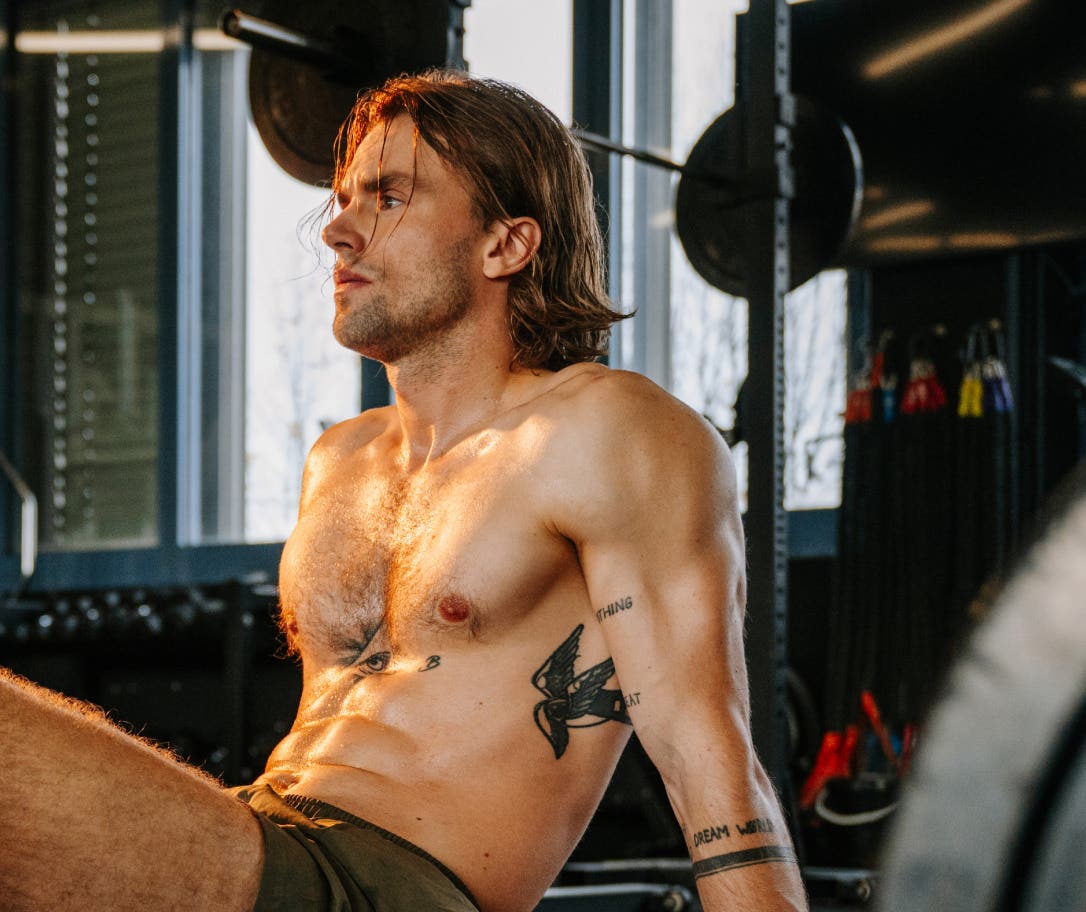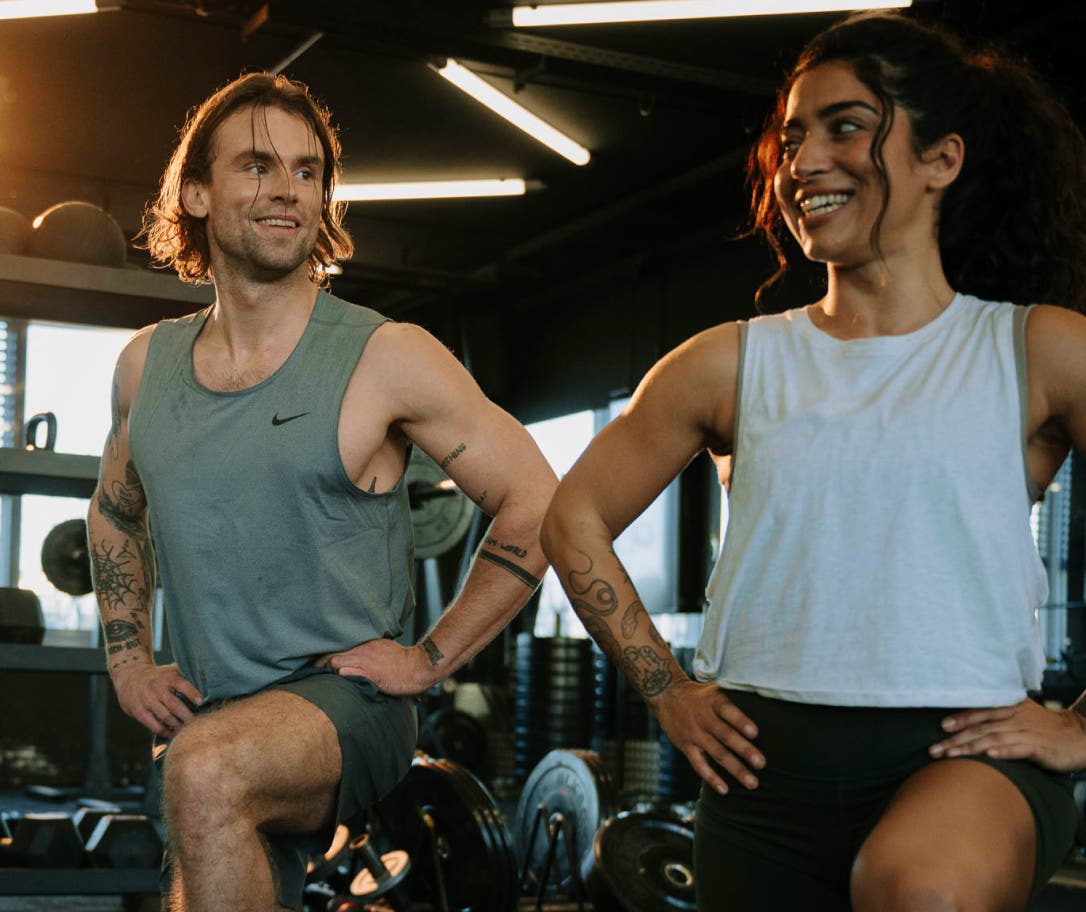Just like everyone’s fitness journey, training results are incredibly unique. Even if you’re following the same training or weight loss program as someone else, your results can vary.
While some people may see results after a week, others after a month, in many cases, it can take 3 to 4 months before you notice visible progress. And if you’ve been putting in the effort and exercising regularly, this lack of progress can be frustrating, demotivating, and ultimately cause some people to give up.
But there’s no reason to throw in the towel just yet. Let’s dive into some of the factors that can impact your training results.
What factors affect weight loss?
For many people, starting a new fitness journey is inspired by a desire to lose weight. Yet, weight loss can be impacted by several key factors.
Caloric deficit
One of the critical components for weight loss is creating a caloric deficit or consuming fewer calories than you burn. Research shows that a deficit of 500 to 700 calories per day is recommended for weight loss.1
Water weight
While weight loss is definitely a journey, it can also happen pretty quickly. Even in the first week of starting to exercise and changing your life, it’s not uncommon to notice a difference on the scale.
However, this initial, fast weight loss is usually due to the body shedding excess water that it has retained. Glycogen, the body's stored form of carbohydrates, is held in your muscles and liver and is bound to water. Typically, every 1 g of glycogen is stored with 3 g of water.2
So, when you start burning energy through exercise, this water is released through sweat and urine, resulting in what appears to be rapid weight loss.
Metabolic adaptation
After a while, your metabolism may adjust to your new weight and activity level, which can slow your progress. Naturally, the body wants to regain the lost weight to survive.3
However, you can help combat this phenomenon with your diet by eating more protein, avoiding restrictive or fad diets, and doing regular exercise that combines cardio workouts with strength training. Oh, and don’t skimp on the rest and recovery days.

What factors can affect gaining muscle?
Compared to weight loss, gaining muscle is a slower, more deliberate process, but several factors can also affect it.
Progressive overload
Progressive overload is a principle that increases or changes your workouts, so your muscles are continuously challenged to avoid plateaus. If you do the same repetitions or weights each time you train, your muscles will get used to it, and you’ll see little improvement.
A 2011 study found that progressive overload can effectively increase bicep strength and muscle growth in men and women by gradually increasing the weight and number of repetitions over 12 weeks.4
Protein intake
The amount of protein you consume daily can affect how much muscle you gain. A common recommendation for supporting muscle repair and growth is to consume 1.6 g to 2.2 g of protein per kilogram of body weight daily.5
Recovery
Recovery, though often underestimated, is actually a huge factor in muscle growth. Without proper rest and a chance to repair, you’re not likely to see real progress and, what’s worse, risk injury, which can have a detrimental impact on your journey and any goals you may have.
Strenuous workouts naturally cause muscles to break down, whereas rest allows your muscles to recover, repair, and rebuild. Without rest days, your progress will be hindered because your muscles will continually be broken down without the opportunity to build back up.
Other influential factors
While your specific goals and training consistency are key, several other factors can impact how quickly you see progress.
Your starting point
When embarking on your fitness journey, your starting point plays a key role in what kind of results you can expect. And this is exactly why we emphasize the importance of focusing on your individual path.
For example, someone who is overweight and not used to exercise may notice a change more quickly than someone who is lighter and at a more advanced stage. This can be because they have greater mass, which demands more energy to move. As a result, they end up burning more calories than someone lighter doing the same workout.
Genetics
Your genetic makeup can influence how quickly you lose weight or gain muscle, and unfortunately, there’s little you can do about this. For example, some research has identified specific genes that can influence how much weight an individual can lose.6
Gender differences
While strength training and exercise are beneficial for everyone, men tend to build muscle and lose weight faster than women. This is largely due to higher testosterone levels, more muscle mass, and a higher metabolic rate in most cases.7
Although women’s bodies respond just as quickly to exercise and training, they don‘t do so at the same intensity as males. When it comes to building muscle, men on average can gain 0.7 - 1.0 kg of muscle every month, whereas with women, it’s more likely to be around 0.5 kg per month.

How can you boost your results?
1. Nutrition
To succeed in your fitness journey, pay close attention to what’s on your plate – what you eat plays a key role in the results you’ll achieve. Nutrition generally plays a bigger role in weight loss than exercise.
There’s a kernel of truth to the phrase “Abs are made in the kitchen”. So, whether you are looking to lose weight or gain muscle, focus on these key actions:
- prioritize whole, nutrient-dense foods like fruits, vegetables, whole grains, nuts, and seeds
- ensure adequate protein intake for muscle repair and growth, especially if you want to make gains
- stay hydrated to optimize performance and recovery
2. Recovery
If you want to see results quickly, you’ve got to train hard and recover even harder. Following exercise, you need to give your body the time and rest it needs to build new muscle and recover sufficiently to reduce the risk of injury.
You can help by incorporating the following into your routine:
- Sleep – aim for 7 to 9 hours of good quality sleep per night,8 making sure your bedroom is clean, tidy, cool, and quiet.
- Rest days – ideally, you should build in at least one rest day per week, but you may need to build in more if your training is intense or stressful on your joints or muscles.
- Stretching – Activities like yoga, mobility, dynamic stretching, foam rolling, or Pilates can enhance recovery and reduce the risk of injury as well as alleviate muscle soreness.9
You can also think about building in active recovery days to help your body repair and rebuild after exercise by increasing blood flow, eliminating waste products, and reducing muscle soreness.
3. Daily active movement (NEAT)
To enhance weight loss results, increase your daily activity levels or non-exercise activity thermogenesis by walking, gardening, or taking the stairs. Simple activities such as these increase the number of calories you burn which can boost your overall results.
4. Mindset and self-talk
Your mindset and outlook can significantly affect your results. Staying positive, even if you don’t feel any improvement, is essential. Here are some of our top tips:
- Replace negative self-talk with positive affirmations like “I’m getting stronger each day” or “I’m walking further than I did last week”.
- Stay motivated by setting small, realistic, short-term goals.
- Focus on the things you can do rather than those you can’t.
5. Mindfulness
Research shows that when accompanied by dietary changes, mindfulness techniques can lead to weight loss in obese people.10 Therefore, using mindfulness to help ‘be present’ in your workouts and meals may enhance your results. For example:
- Focus on proper form and technique during your workouts and training.
- Eat slowly and mindfully to help you better recognize hunger and fullness cues.
Let’s recap
We’ve said it before and will keep saying it again and again – fitness is a journey, not a one-stop shop, regardless of your goal. And it’s not linear either; it’s a process filled with setbacks, fluctuations, and plateaus.
The key is to stay consistent, be patient, and maintain a positive outlook. Over time, those seemly small and consistent changes will yield even bigger results that’ll make you stronger, fitter, and an even better version of yourself.
Sources
[1] Kim J. Y. (2021). Optimal Diet Strategies for Weight Loss and Weight Loss Maintenance. Journal of obesity & metabolic syndrome, 30(1), 20–31. https://doi.org/10.7570/jomes20065
[2] Fernández-Elías, V. E., Ortega, J. F., Nelson, R. K., & Mora-Rodriguez, R. (2015). Relationship between muscle water and glycogen recovery after prolonged exercise in the heat in humans. European journal of applied physiology, 115(9), 1919–1926. https://doi.org/10.1007/s00421-015-3175-z
[3] Martínez-Gómez, M. G., & Roberts, B. M. (2022). Metabolic Adaptations to Weight Loss: A Brief Review. Journal of strength and conditioning research, 36(10), 2970–2981. https://doi.org/10.1519/JSC.0000000000003991
[4] Peterson, M. D., Pistilli, E., Haff, G. G., Hoffman, E. P., & Gordon, P. M. (2011). Progression of volume load and muscular adaptation during resistance exercise. European journal of applied physiology, 111(6), 1063–1071. https://doi.org/10.1007/s00421-010-1735-9
[5] Schoenfeld BJ, Aragon AA. How much protein can the body use in a single meal for muscle-building? implications for daily protein distribution. Journal of the International Society of Sports Nutrition. 2018 Jan 5;15(1). doi:10.1186/s12970-018-0215-1
[6] Chung HC, Keiller DR, Waterworth SP, McManus CJ, Roberts JD, Gordon DA. Genotypic variations associated with changes in body mass in response to endurance training. Research Quarterly for Exercise and Sport. 2024 Sept 18;1–11. doi:10.1080/02701367.2024.2404981
[7] Christensen, P., Meinert Larsen, T., Westerterp-Plantenga, M., Macdonald, I., Martinez, J. A., Handjiev, S., Poppitt, S., Hansen, S., Ritz, C., Astrup, A., Pastor-Sanz, L., Sandø-Pedersen, F., Pietiläinen, K. H., Sundvall, J., Drummen, M., Taylor, M. A., Navas-Carretero, S., Handjieva-Darlenska, T., Brodie, S., Silvestre, M. P., … Raben, A. (2018). Men and women respond differently to rapid weight loss: Metabolic outcomes of a multi-centre intervention study after a low-energy diet in 2500 overweight, individuals with pre-diabetes (PREVIEW). Diabetes, obesity & metabolism, 20(12), 2840–2851. https://doi.org/10.1111/dom.13466
[8] Doherty, R., Madigan, S. M., Nevill, A., Warrington, G., & Ellis, J. G. (2021). The Sleep and Recovery Practices of Athletes. Nutrients, 13(4), 1330. https://doi.org/10.3390/nu13041330
[9] Andersen J. C. (2005). Stretching before and after exercise: effect on muscle soreness and injury risk. Journal of athletic training, 40(3), 218–220.
[10] Asadollahi, T., Khakpour, S., Ahmadi, F., Seyedeh, L., Tahami, Matoo, S., & Bermas, H. (2015). Effectiveness of mindfulness training and dietary regime on weight loss in obese people. Journal of medicine and life, 8(Spec Iss 4), 114–124.